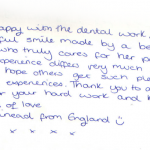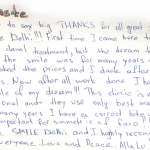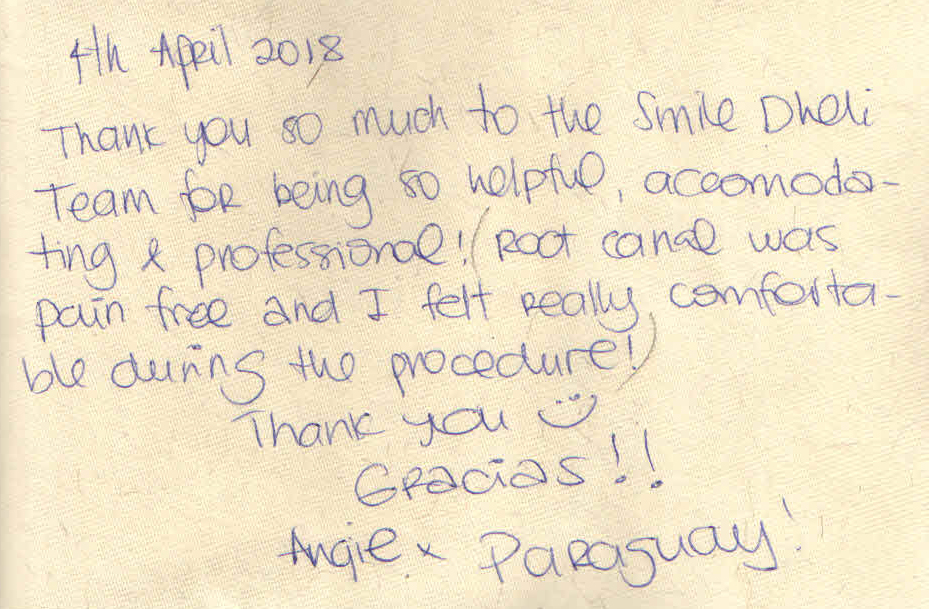Regular Cleaning vs Deep Cleaning
We talk a lot about how periodontal or gum disease is linked to playing a larger role in systemic health, and is association with an increased risk of diabetes and heart disease.
It’s important to understand that there is a big difference between regular cleaning and deep cleaning & its implications that each of these procedures have when it comes to your oral health.
Regular Cleaning
A regular cleaning is designed for the maintenance of healthy gums. The procedure involves cleaning it thoroughly by removing bacteria and tartar buildup.
The focus in a routine cleaning is to remove plaque and tartar that accumulates on in between the teeth, at or above the gum line.
Regular cleaning involves removing stains, plaque and calculus from teeth. Plaque is a sticky substance that builds up on teeth as a byproduct when the bacteria feast on the food we eat. Calculus (tartar) occurs when plaque & minerals in your mouth harden.
Regular cleaning and regular dental checkups together with flossing and brushing can help prevent gum disease. It is recommended to get a regular cleaning every six months to treat mild cases of gingivitis, remove plaque, stains, and tartar from the teeth.
With proper cleanings, brushing, and flossing, bacteria are kept to a minimum to keep the gums healthy.
Periodontitis is a gum disease and a chronic infection. If left untreated, this chronic infection can progress. You begin to lose your teeth, and your jaw bone continues to suffer bone loss that can’t be recovered or restored.
As the bacteria and calculus that has built up collects in the pockets and spaces below the gum line, usually due to infrequent flossing and inadequate oral hygiene, the bacteria secrete acids that dissolve the bone tissue that connect your teeth and jawbone.
It begins extending into the “pockets” below the surface. The heavier the buildup becomes, the deeper the pockets get.
Diseased periodontal tissues can show signs of:
- Bleeding when you brush and floss your teeth
- Sensitive teeth
- Recession of the gums or longer appearance of teeth
- Problems with food getting stuck deep under the gums
- Tooth mobility or loss
Periodontitis is a symptom of your body destroying itself in a desperate attempt to fight off a chronic infection.
Periodontitis is considered a big red flag when it comes to oral health. As a chronic and systemic infection in any other area of the body should be addressed and treated immediately, the mouth is no different.
Deep Cleaning
Deep cleaning is done where there is active gum disease like early periodontitis where there is a large amount of tartar and bacteria under the gums that has resulted in bleeding gums, bad breath, teeth that look longer due to recessed gums, swollen or red gums and bone loss. This type of cleaning goes beyond the basic cleaning.
It is this tartar that is causing the inflammation in the gums, which in turn causes the loss of bone that holds the teeth.
Pockets can develop when the person does not brush and floss regularly or when a person has not had their teeth professionally cleaned for a long period of time or sometimes, other health issues can also put a person at risk for developing pockets.
When pockets form due to gum disease, the plaque and tarter fill these pockets. Deep cleaning helps prevent gum disease or periodontal disease that generally develops when bacteria create pockets around the tooth, below the gum line.
If left untreated, gingivitis can create periodontal pockets below the gum line of the tooth where the bacteria can further damage the tooth. Gum disease can cause the tooth to separate from the surrounding bone and fall out.
The first step to improve this condition is to have a deep cleaning of the teeth to clear the pockets of the bacteria and tartar build-up. Plaque and tartar on the surface of the teeth irritate the gums and induce bleeding.
During this procedure, the area between the gums and roots of the teeth are cleaned thoroughly. It is therefore advised to get bacteria out of the pockets and to stop gum disease.
Early gum disease if not treated, it opens the door to a number of oral health complications, such as advanced gun/periodontal disease and eventual tooth loss.
Unlike regular cleanings, it can take more than one appointment for the cleaning to be performed due to the extensiveness of the cleaning needed. Once the pockets are rid of bacteria and the irritant of tartar is removed from the tooth and root surfaces, the gums and roots heal rapidly.
For those who have periodontal disease, a deep cleaning can actually help reverse the progression of the disease. In fact, many see results within 3 months of having their teeth deep cleaned.
Many people can have periodontal disease & not even know it. However, many people do not notice any symptoms at all.
It’s important to understand that deep cleaning is vital to getting periodontal disease under control & avoid future tooth loss, though other procedures including surgery may be required to treat the disease.
One of the most important things you can do to prevent gum disease is to get preventative cleanings on a schedule that is recommended by your dentist every six months.
With regular visits to the dentist, and proper brushing and flossing, it is unlikely you will develop periodontal disease. So take good care of your teeth now to avoid bigger problems down the line!
Posted by- Dr Shriya





























































